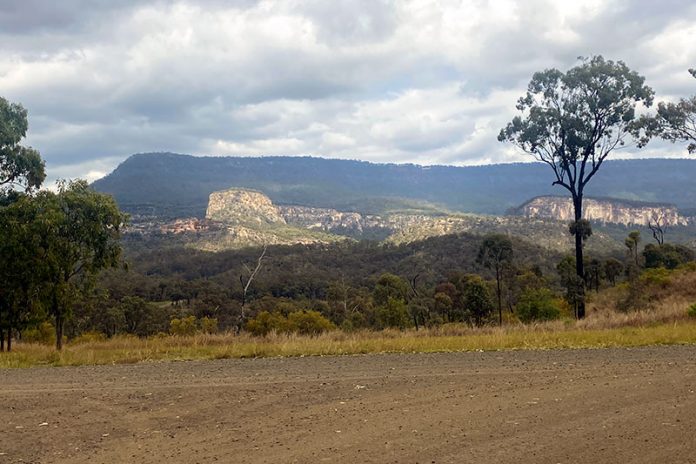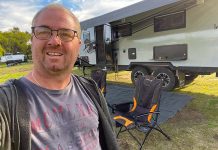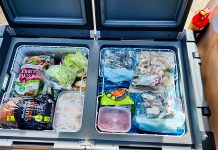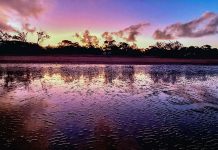I had wanted to try to get into the Royal Navy as an officer cadet, but Dad vetoed this and I filled in time as a core-maker and then a spent a few months working in a market garden until I was 17 and no longer needed parental consent to volunteer for the Royal Air Force. After extensive medical and aptitude tests, I was accepted as aircrew and just after my 18th birthday, waved goodbye to Mum as the train taking me to a new life pulled out of Salisbury Station.
My first acquaintance with four-wheeled transport hadn’t been too happy so, with a very small weekly income as an aircrew cadet, I started looking out for an affordable motorbike. This turned out to be a Triumph Tiger 80 – a 350cc model with a choked exhaust that made it very quiet and also very slow.
With Murphy’s help, I fixed that by driving a large crowbar up the silencer. This not only loosened the carbon but also made a mess of the baffles and caused the exhaust note to be audible for miles until I stuffed the muffler with curled-up chicken wire to keep out of the hands of the law for noise pollution.
‘Number 10 All Through’ was the name of the group of young would-be flight engineers who assembled at RAF St Athan in South Wales for our 18 months of training.
Derek Meacham, re-mustering from being a leading aircraftsman rigger, was our senior man and had a room and stove to himself. We shared two heaters in the rest of the hut with about 30 of us trying to stay warm while Derek sweltered in the sub-tropical climate of his solitary cell. Fuel was in short supply and the winter was very cold. Although our 10 or so wooden huts gradually lost their bottom planks as the winter progressed, I never heard anyone in authority question what was happening to them.
One of our number was a Yorkshireman called Stewart Dunlop who was a mad bike rider and would do nearly anything for money. We had him riding to the local village for chips – we couldn’t afford fish – on many a dark, dreary night with the promise of keeping the sixpence change. Stewart kept an assortment of bicycle parts and old clothes in a spare locker, which always remained closed during our regular billet inspections.
One day, Murphy intervened and a new inspecting officer demanded the locker be opened. Out fell a wheel and a heap of other bits and pieces, much to the surprise of the officer and the embarrassment of the rest of us standing rigidly to attention by the side of our beds, trying to pretend it wasn’t happening.
Stewart and a lad called Maurice Bluemental couldn’t get along and had terrific arguments. One night, this led to a violent fight and, as they struggled on the highly polished billet floor, Stewart reached out with his bare foot to get a purchase on something to give him more leverage in his quest to throttle his opponent. Unfortunately, the ‘something’ was the heating stove – glowing red-hot from scavenged building boards – and the whole room was filled with the stench of burning flesh.
Poor Stewart got violently airsick during our first flight in a Lincoln bomber and his prostrate body was in the way as the rest of us periodically walked down the fuselage to the tail-gunner’s position. We did nothing to help his distress by walking over him in our struggle to get past his bulky form.
Twice a week we had to front up at the gymnasium for physical training but one member of the group had to remain in the changing room to watch the watches and other valuables. By regularly volunteering for this duty, I managed to keep away from physical exertion the whole time we were at St Athan – the instructors had never seen me so never missed my face at their arduous sessions!
Our senior man, Derek ‘Taffy’ Meacham, lived at Rogiet near the railway station at the northern exit of the Severn Tunnel and I used to put my motorcycle in the guard’s van of the last train north at the other end of the tunnel as a quicker way to get back to St Athan on Sunday nights after going home for the weekend.
It saved a considerable distance and I used to pick Derek up on my way through. One miserable, wet night, Taff had his loose things in a brown paper bag, which was okay until water got into the ignition and the motor stopped some miles short of the camp. We had to push the bike the rest of the way and although we could glimpse the aerodrome lights in the distance, every turn we took towards our destination headed the wrong way before long.
Murphy then added to our woes by soaking Derek’s paper bag so that the contents, including his clean undies, spilt out on the road. We finally made it to our billet in the early hours of the morning and – would you believe it – next morning the bike fired first kick!
In those days I was a keen member of the Salvation Army and it was in the Army that I learned to play brass instruments. To this day I still play the trombone in the local brass band when we are not away for the winter with our caravan.
The Salvos had a farm in one of the Welsh valleys and I often found myself ‘up the valley’ at weekends staying at the farm – the attraction, of course, being a couple of the village girls who visited the farm during the weekend.
Winter in South Wales is harsh, with snow and ice often blocking roads and making motorcycling particularly dangerous. One Monday morning I had left the farm early to get back to camp before activities started and the roads were covered in rutted snow. I ‘lost’ the bike on a corner and went sliding head over heels towards the wall of a bridge. I was wearing a leather helmet, as crash hats were only worn by racing riders in those days, and Murphy ensured I was still moving fairly fast when my head came in contact with the bridge and I managed to give myself a case of concussion and a stay of a few days in the station hospital.
I rode the undamaged bike the rest of the way back to camp and my concussion wasn’t discovered until I reported on sick parade with a bad headache!
MURPHY’S LATEST TRICK
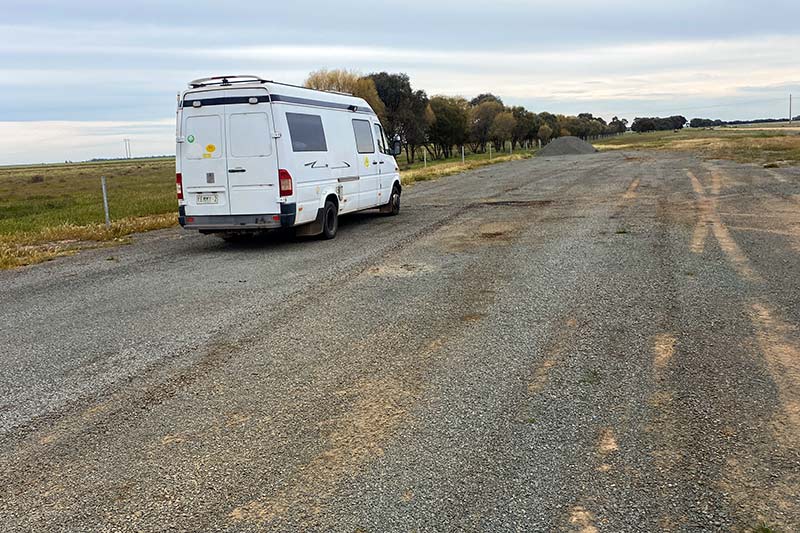
Murphy’s latest trick was to jam shut the sliding door where all Yemmy’s electrics live. This meant a 650km round trip to Officer, Vic, to see my Sprinter guru Eric and he was able to fix the problem after removing a heap of stuff that was blocking access to the inside of the door. Once there, a pull on the inside opener and the door could be opened. A good spray of silicon on all the moving parts and the door was fixed.
I was able to get back through Melbourne before the rush hour and was on the Western Freeway in good time with an expected ETA home before 6pm.
That’s when Murphy struck. All the traffic came to a halt and only moved forward a few meters at a time. When we finally reached Melton, we found that a large truck and trailer had tipped over and was blocking most of the road. Trucks were allowed through but smaller vehicles were diverted into Melton. From then on everything was slow until we eventually got back on to the freeway and were able to drive normally. The diversion had added an hour and a half to the journey and it was about 7.30pm when I reached home. But Murphy had a final trick to play! My washing machine had sprung a leak and water had been soaking the floor!
CAMPING AT CARNARVON GORGE
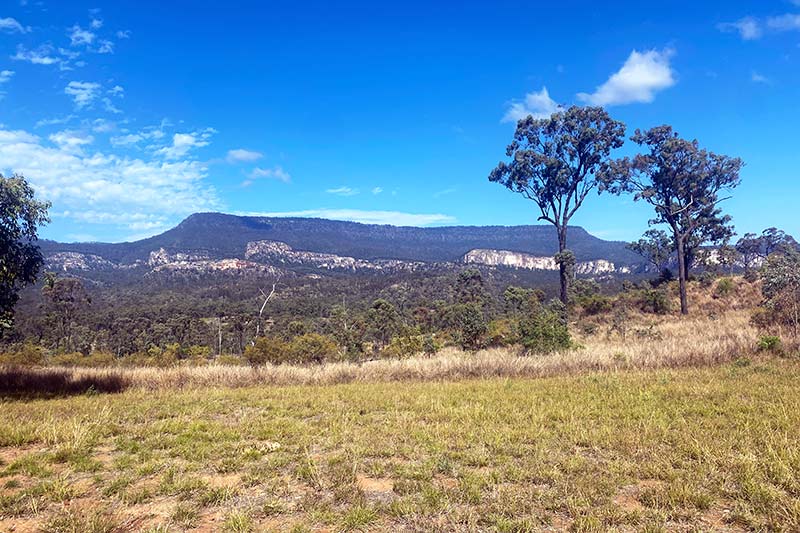
After a lovely stay at the Pinnacles Caravan Park we took three days to reach Carnarvon Gorge and my campsite at Sandstone. There was no power but the views from all the sites were fantastic in every direction.
The rest of my ACC friends were at the Big 4 Caravan Park and my friend John picked me up and took me to the Gorge Visitor’s Centre where there were some great posters. The walk through the gorge was about 20km – a lot too far for me.
HEADING FOR HOME
Despite the great views, I decided to move on after a few days with my first night at a great free camp by the river at Surat. There were good toilets, a dump point and a few taps that enabled me to refill my water tank.
Murphy took a hand when I reached St George next morning. A sign said ‘Road closed by floods from Dirranbandi to Bourke’. I thought there would be an alternative route from there but I was wrong and I had to head back 100km to St George. The choice was to go back to Surat and wait for the floods to go down or head east to Goondiwindi and take the Newell Highway south.
I went east and it proved to be the right choice and despite a few ‘Water over the road’ crossings it was good traveling.
There were plenty of places for overnight stays until I reached Victoria and country roads. I finally found a disused road metal area and settled for the night.
I woke up next morning to the sound of heavy rain on the roof so after a wake-up coffee I took to the road.
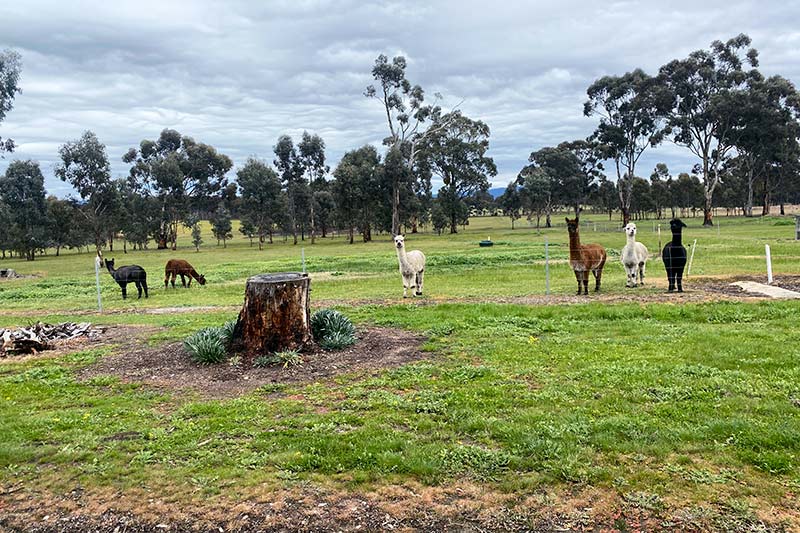
The roads continued to be narrow and twisty for 250km until Donald, where the rain stopped and the road improved for the final stage of travel to my home where I arrived before lunch with a welcome from the alpacas.
Murphy, meanwhile, is contenting himself by making my computer ornery!


